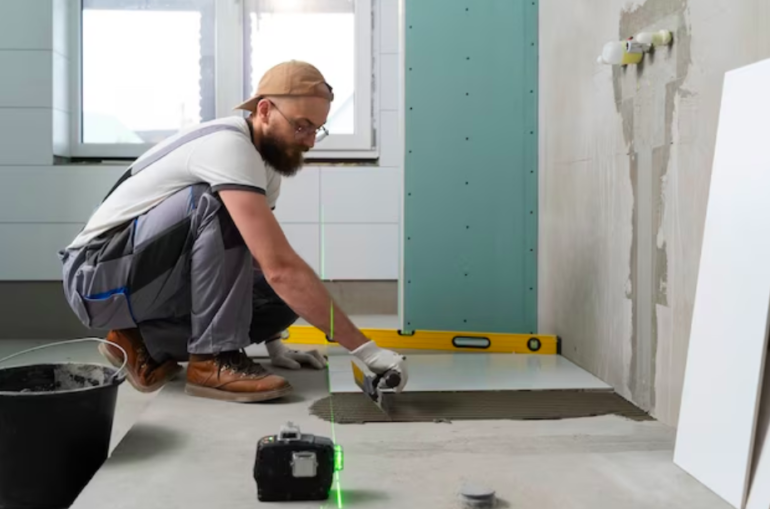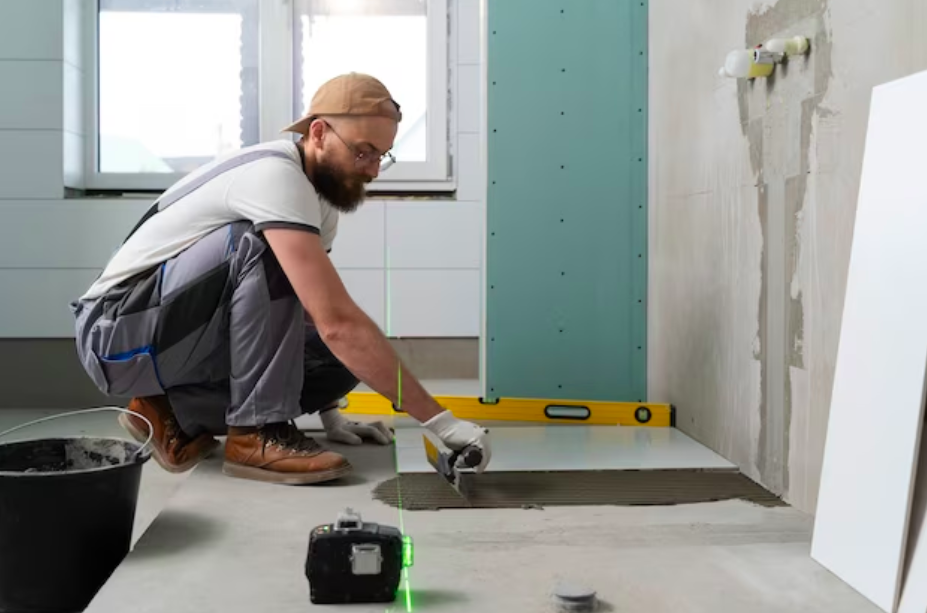
- February 6, 2024
- Home Improvement
- No Comments
Basements have long been relegated to dark and dusty storage spaces, but a shift in perspective is leading homeowners to explore innovative approaches to basement remodeling. Beyond merely serving as storage, basements can be transformed into functional and inviting living spaces. In this comprehensive guide, we will explore the benefits of basement remodeling and crucial aspects to consider like heating, waterproofing, and waste management to help you transform your basement into a comfortable and durable lower-level living area.beautiful and functional space.

Benefits of Basement Remodeling
Increased Living Space
One of the primary advantages of remodeling your basement is the opportunity to add valuable square footage to your home. Whether you choose to create a cozy family room, a home office, a guest suite, or a recreational space, a well-designed basement can significantly enhance your home’s livable area.
Enhanced Property Value
A finished and well-designed basement can substantially increase the resale value of your home. Potential buyers often view a finished basement as an attractive feature, providing additional living space and versatility. This can be a valuable selling point when the time comes to put your home on the market.
Functional Flexibility
The versatility of a remodeled basement allows you to tailor the space to meet your specific needs. From creating a home gym or a dedicated entertainment area to building a playroom for the kids, the possibilities are endless. This flexibility ensures that your basement serves a purpose that aligns with your lifestyle.

Heating the Basement
One of the primary challenges in turning a basement into a habitable space is addressing the heating requirements. Basements often tend to be cooler than the rest of the house due to their below-ground location. To make the space comfortable and inviting, homeowners can explore various heating options.
Underfloor heating systems, such as radiant heating, are gaining popularity in basement renovations. These systems involve installing heating elements beneath the floor, providing an even and efficient distribution of warmth. This not only keeps the space cozy but also eliminates the need for bulky radiators or vents, optimizing the usable floor area.
Alternatively, electric baseboard heaters can be strategically placed along the perimeter of the basement. These heaters are compact, easy to install, and allow for zone heating, providing control over individual room temperatures. Additionally, considering energy-efficient options like heat pumps can be an eco-friendly and cost-effective solution for heating basement spaces.
Best Ways to Waterproof the Basement

Waterproofing is a crucial step in basement remodeling to protect the space from potential water damage and mold growth. Moisture issues are common in basements due to their underground location, making effective waterproofing essential for a successful renovation.
The best way to waterproof a basement is through the reliable method of exterior excavation and waterproofing. This process entails excavating around the foundation, applying a waterproof membrane, and incorporating drainage systems to redirect water away from the basement. Although this approach is acknowledged as one of the best ways to waterproof a basement, it is important to note that it can be both disruptive and costly.
Interior basement waterproofing methods are less invasive and often more budget-friendly. Installing a drainage system, such as a French drain, along the interior perimeter of the basement can effectively manage water buildup. Additionally, using waterproofing sealants on basement walls and floors creates a barrier against moisture infiltration.
Advancements in basement waterproofing technology include the use of waterproofing membranes and coatings with enhanced durability and flexibility. These innovative materials provide a robust defense against water intrusion while allowing for the natural expansion and contraction of the building structure.
Roll Off Dumpster Sizes for Basement Remodeling

Basement remodeling inevitably generates a significant amount of waste, from old insulation and drywall to outdated fixtures and furniture. Efficient waste management is essential to keep the remodeling process organized and eco-friendly. There are many different roll off dumpster sizes to choose from and selecting the right one is a crucial aspect of this process.
Roll-off dumpsters come in various sizes to accommodate different project scales. For a typical basement remodeling project, a 10-yard or 20-yard dumpster may be sufficient. These sizes are suitable for disposing of construction debris, old furniture, and other waste materials generated during the renovation.
It’s essential to consider the types of materials being discarded when selecting a dumpster size. Heavy materials like concrete and tiles may require a larger dumpster with a higher weight capacity. Coordinating with a waste management provider to assess the specific needs of the project ensures that the appropriate dumpster size is chosen, preventing unnecessary expenses or complications.
Revamp Your Basement: Essential Considerations for a Successful Remodel
Basement remodeling has evolved beyond simple storage solutions, opening up opportunities to create valuable living spaces. Addressing heating needs, implementing effective waterproofing strategies, and managing waste efficiently are integral components of a successful basement renovation. By exploring innovative approaches and embracing new technologies, homeowners can unlock the full potential of their basements, transforming them into comfortable, durable, and welcoming extensions of their homes.
